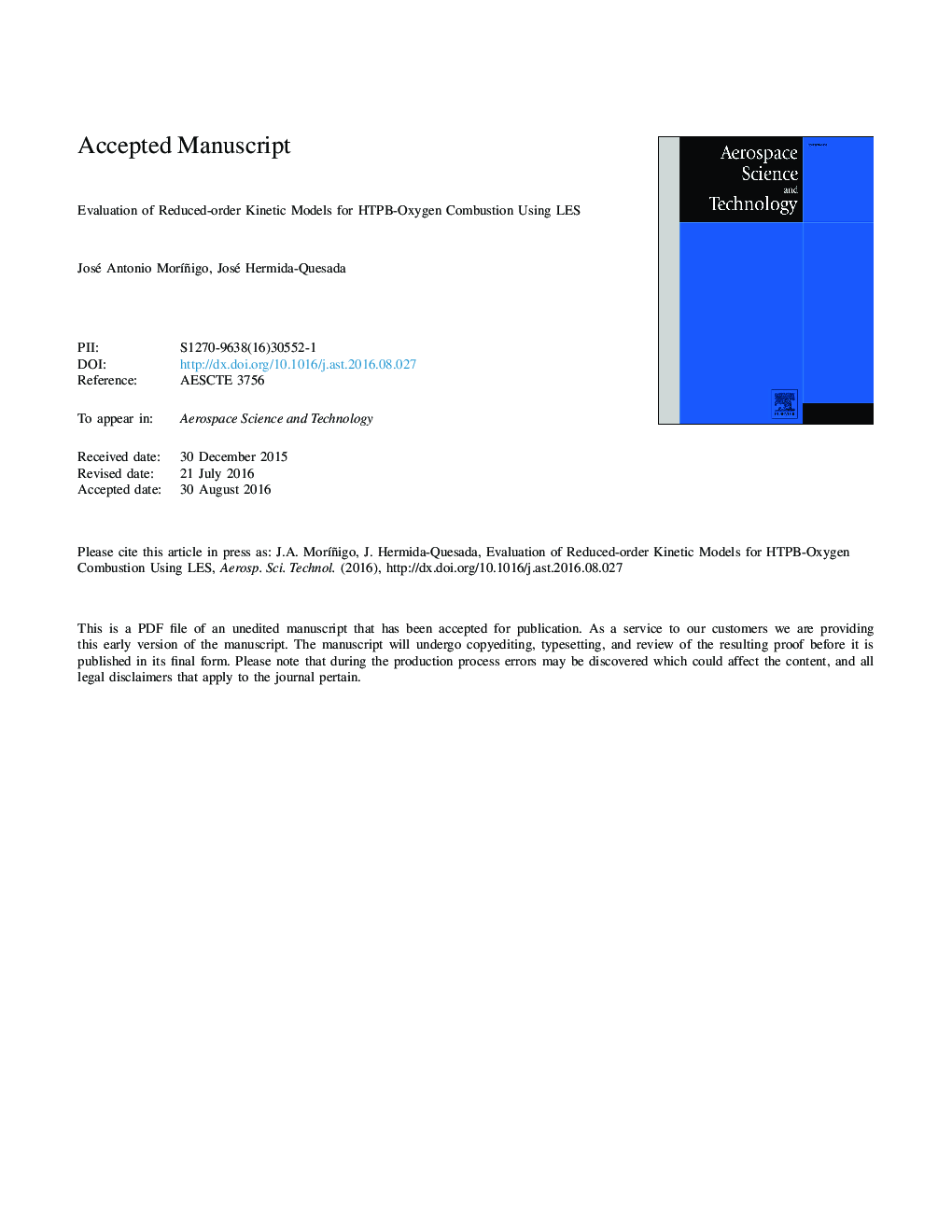| Article ID | Journal | Published Year | Pages | File Type |
|---|---|---|---|---|
| 8058472 | Aerospace Science and Technology | 2016 | 36 Pages |
Abstract
The results show that dissociation reactions of the 6-reaction mechanism play a significant impact on the combustion temperature, which approaches the experimental evidence, hence it is in agreement with the theoretical flame temperature predicted by detailed chemistry solvers. On the contrary, flame temperature computed with the 2 and 4-step chemistry models is over-predicted upon unrealistic limits, above 3150 K, which is attributed to the lack of fundamental physics linked to the non-inclusion of endothermal reactions in these models. Although an improvement is clearly provided by the 6-reaction chemistry, a drawback is however observed: a less robust behaviour of the solver occurs. Therefore, a decision concerning to weight the inclusion of more accurate (more steps) finite-rate kinetics against the numerical complexities (operational and geometrical) of engineering simulations in hybrid propulsion systems, is of concern in the final approach.
Keywords
Related Topics
Physical Sciences and Engineering
Engineering
Aerospace Engineering
Authors
José Antonio MorÃñigo, José Hermida-Quesada,
